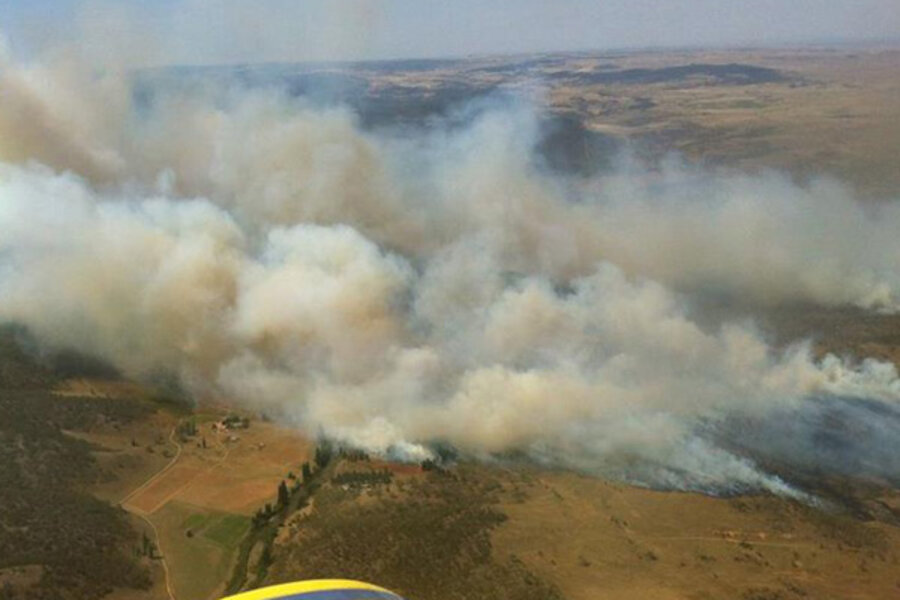Wildfires, aided by hot conditions, rage across southeast Australia
Loading...
| Cooma, Australia
Firefighters battled scores of wildfires Tuesday in southeastern Australia as authorities evacuated national parks and warned that hot, dry and windy conditions were combining to raise the threat to its highest alert level.
Temperatures soared to 113 degrees Fahrenheit in some areas.
No deaths have been reported, although officials in Tasmania were still trying to find about 100 people who have been missing since last week when a fire tore through the small town of Dunalley, east of the state capital of Hobart, destroying around 90 homes. On Tuesday, police found no bodies during preliminary checks of the ruined houses.
"You don't get conditions worse than this," New South Wales Rural Fire Service Commissioner Shane Fitzsimmons said. "We are at the catastrophic level and clearly in those areas leaving early is your safest option."
Catastrophic threat level is the most severe rating.
Wildfires are common during the Australian summer. The combination of soaring temperatures and dry, windy conditions since Friday have sparked fires that burned 50,000 acres of forests and farmland across southern Tasmania.
In New South Wales, Australia's most populous state, the fires scorched 74,000 acres. All state forests and national parks were closed as a precaution and total fire bans were in place.
In Victoria state, where fires in February 2009 killed 173 people and destroyed more than 2,000 homes, officials said two people were treated for minor burns and four were treated for smoke inhalation.
Up to 20 properties in the town of Chepstowe west of Melbourne reportedly were hit by a fire, although it was too early to know the extent of the damage, a Victoria Country Fire Authority spokeswoman said.
More than 130 fires were blazing across New South Wales, though only a few dozen houses were threatened as night fell. One home was destroyed in the village of Jugiong, northwest of the capital of Canberra, fire officials said.
A fire was burning near about 30 homes near the small town of Cooma, south of Canberra. Cooma-Monaro shire Mayor Dean Lynch told Australia's Sky News some residents had evacuated to the nearby town of Nimmitabel.
Wind gusts of more than 62 mph were recorded in some parts of the state, although a cool front moving across the region late Tuesday brought some relief and raised hopes that New South Wales might avoid major damage.
"If we get through today without loss of life and loss of property, we'll have had a remarkable escape from what could have been," New South Wales Premier Barry O'Farrell told the Seven Network.
Many residents in the town of Tarcutta, 120 miles west of Canberra, took shelter at a community center. Eva Toth, owner of the Tarcutta Halfway Motor Inn, opted instead to hunker down inside the office for a sleepless night next to her motel. She was ready to jump in her car if word came that the flames were close.
"The wind is just unbelievable. It just suddenly comes like a whirly, twirly tornado," she said by telephone. "To live this is really frightening. When you walk into my place, you can smell the smoke even in my house."
One volunteer firefighter suffered severe burns to his hands and face while fighting a grass fire near Gundaroo village, 138 miles southwest of Sydney, on Monday. He was flown to a hospital in Sydney for treatment.
Fitzsimmons, the fire commissioner, said the firefighter's condition had improved Tuesday and he should be released from the hospital in the next few days.







